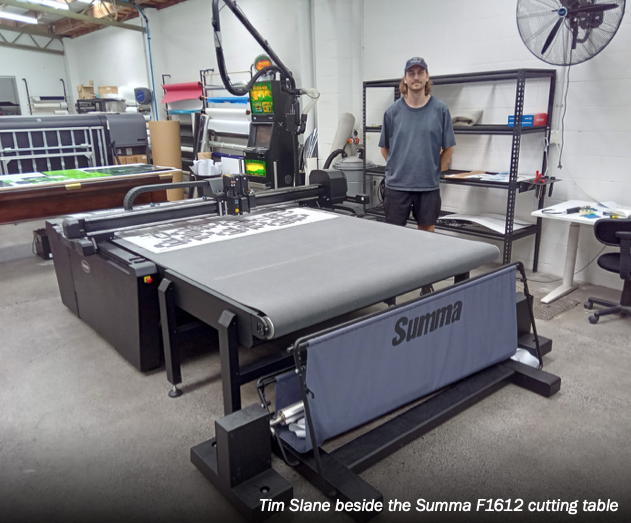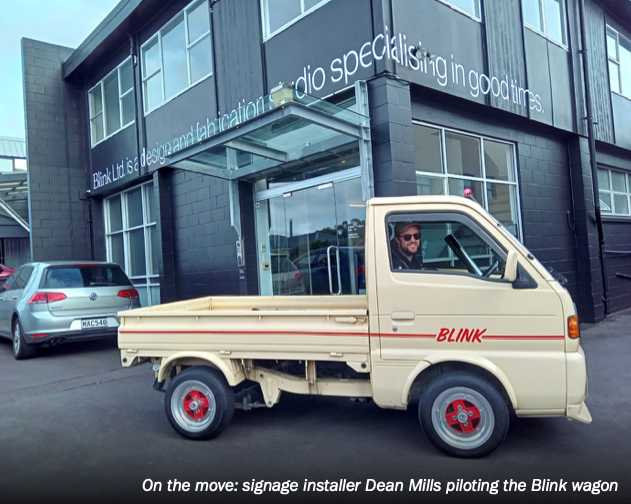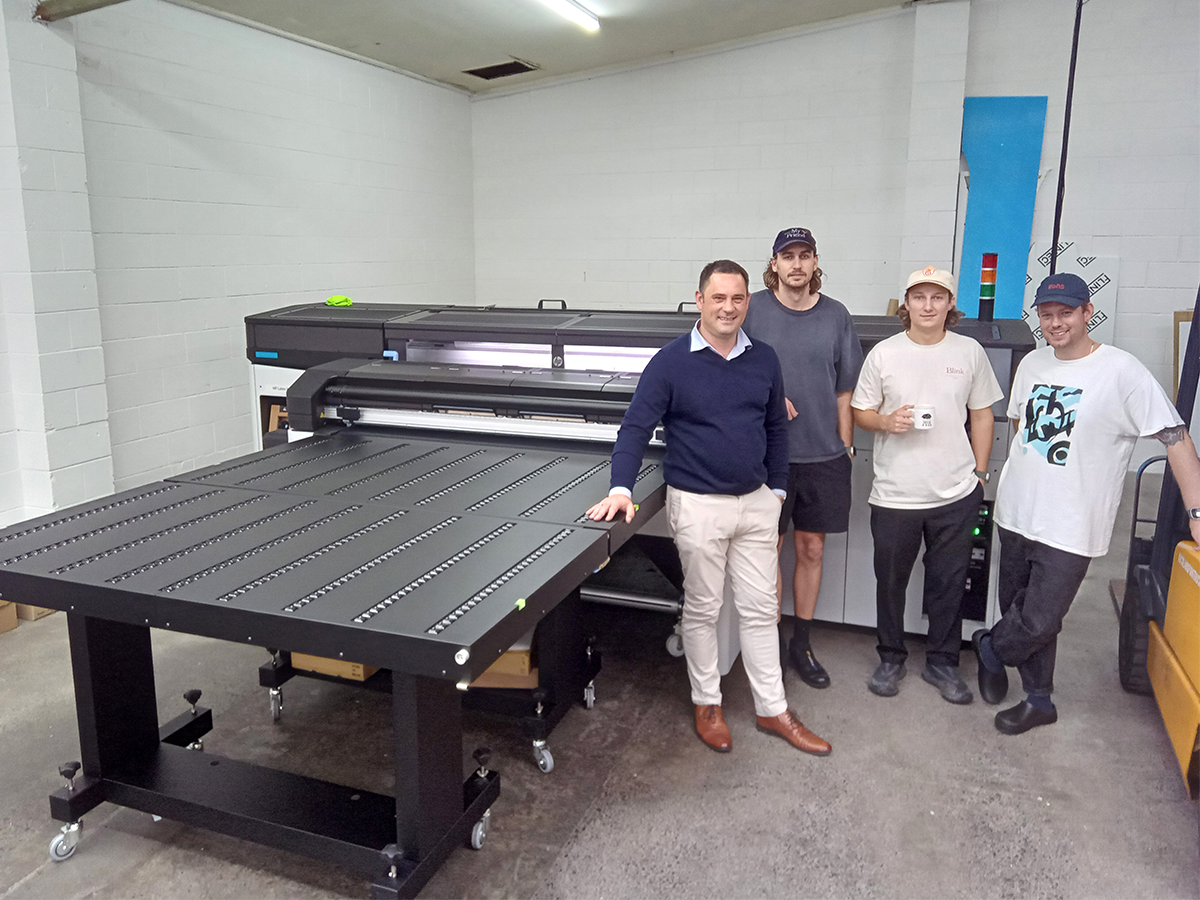Moving into its ninth year, Auckland-based Blink has recently grown its business with the addition of new technology.
Last October, the company installed a Summa F1612 cutting table and earlier this year, it added an HP R1000 Latex printer, both supplied by Computaleta.
Since starting the company in 2015, directors, Andrew and Tim Slane and Asher Walker have grown Blink into an innovative enterprise that attracts a range of clients looking for something extra. New Zealand Printer spoke with the three directors and Computaleta hardware manager Aaron Kemp at Blink’s Morningside premises.
Andrew says, “We had considered buying a cutting table for some time and when we looked at the available cutting tables on the market, we could see that some of them were quite expensive. We were not looking for a cheap machine, but price is a factor in any company’s decision making. We were pleasantly surprised to find that the Summa is a comparable machine in performance to more expensive cutting tables.
“It is an awesome cutting table that improves our operation considerably. We found that once we started using the Summa, we realised that there were more opportunities to create other products.”

Tim adds, “We saw the Summa at PacPrint last year, and we thought it was a good fit for us. We could see there was a balance between its price and the fact it is a quality machine. Since we installed it, we have made considerable use of it, and it has given us the versatility to try different things. For instance, we can test out a die-line to see if it will work in production.”
Design features highly among priorities at Blink. Andrew says, “We try and focus on creative work and the Summa cutting table is a great addition for that objective because of the possibilities it opens up. Designers are often trained from a digital perspective but being able to create physical items helps with understanding.
Tim adds, “Having the Summa is great as we now have the equipment to make so many different products in-house which allows our designers to be even more creative.”
Andrew says, “Although we like to concentrate on design led projects, we also do plenty of print jobs that we haven’t designed. These jobs require the production speed that the Summa delivers. For example we end up doing many jobs that need quick turnarounds such as event and film work.
“The labour-savings that the Summa gives us is also significant. The machine is here all the time, but staff numbers can fluctuate. Having a machine that gives us the reliability and capability to turn a job around really quickly is important.”
Major investments
“Investing in a large machine involves a number of considerations, among them the necessity for a decent return on investment. Aaron Kemp says, “It is an important point that, when you are spending a considerable amount of money on a machine, you need to know how you can pay it off. It makes no sense to purchase equipment that will sit idle.
“There is always a balance that you need to consider between outsourcing and producing work in-house. So, we run through the numbers and see where you can project some kind of growth because obviously, you are in business to make money, not to make a loss. You want to grow, and if you can put down in hard numbers what you are most likely to do, then that is better than just buying something and hoping it works out.”

Tim adds, “The Summa cutting table has changed our game in terms of how we can respond to jobs. With so many jobs to do, we have found the opportunities for outsourcing have diminished because the turnaround time is so tight to get them done.”
Andrew adds, “While we try to avoid having to put out jobs too quickly, it is the nature of the industry and we do need to be fairly reactive. Once we installed the Summa we realised there was a big increase in capacity and we could see that the full potential of the cutter would only be realised if we had a flatbed to go next to it.”
“We had been in business for eight years and we had spent that time kind of running away from flatbed printing after having experienced it at our past job. But after seeing the flatbed cutting table in action and seeing the potential for what we could create with a flatbed printer, it was a no-brainer to install the HP R1000 Latex printer.”
Tim adds, “We ended up doing more and more printing and sticking to sheets and it kind of just kept increasing until we got to the point where we had to say, ‘Right, we need a machine that is faster and easier’.
“The HP R1000 Latex printer’s sustainability credentials had a big influence on our choice, as opposed to some of the other UV options out there. Regard for the environmental impact of what we do is important both to us and to our clients so we feel like we have chosen the right flatbed in that discussion.
Computaleta service and support
Blink has partnered with Computaleta since 2015. Andrew says, “Computaleta was a natural choice for a partnership. It is interesting that when Computaleta moved to Onehunga, we were concerned about whether they could still provide us great service as we were so close to the old site but they worked hard to keep helping and actually improved the service adding in daily deliveries. Also, when we moved premises in February, they were very helpful.”
Tim adds, “We have to give a shout out to Rachel Guise, the technical services manager at Computaleta. When we started Blink, Rachel gave us so much help, especially in terms of her advice about which products to use. She has so much knowledge and she is generous in the way she shares it. She has always pointed us in the right direction.”


